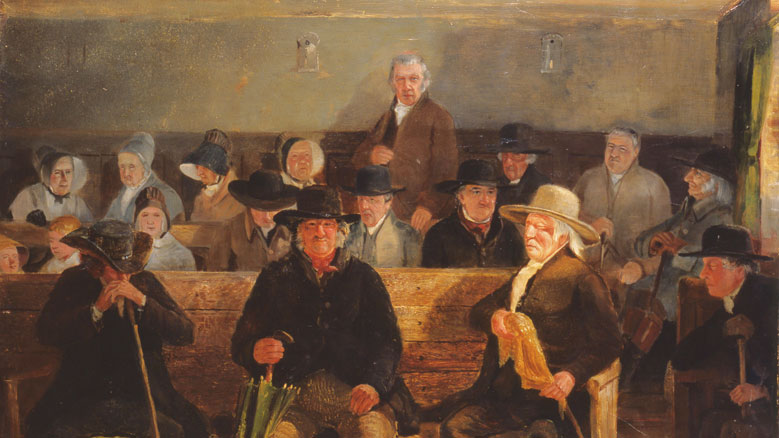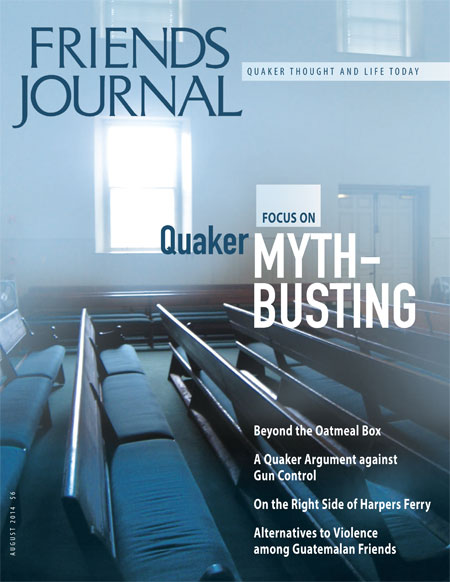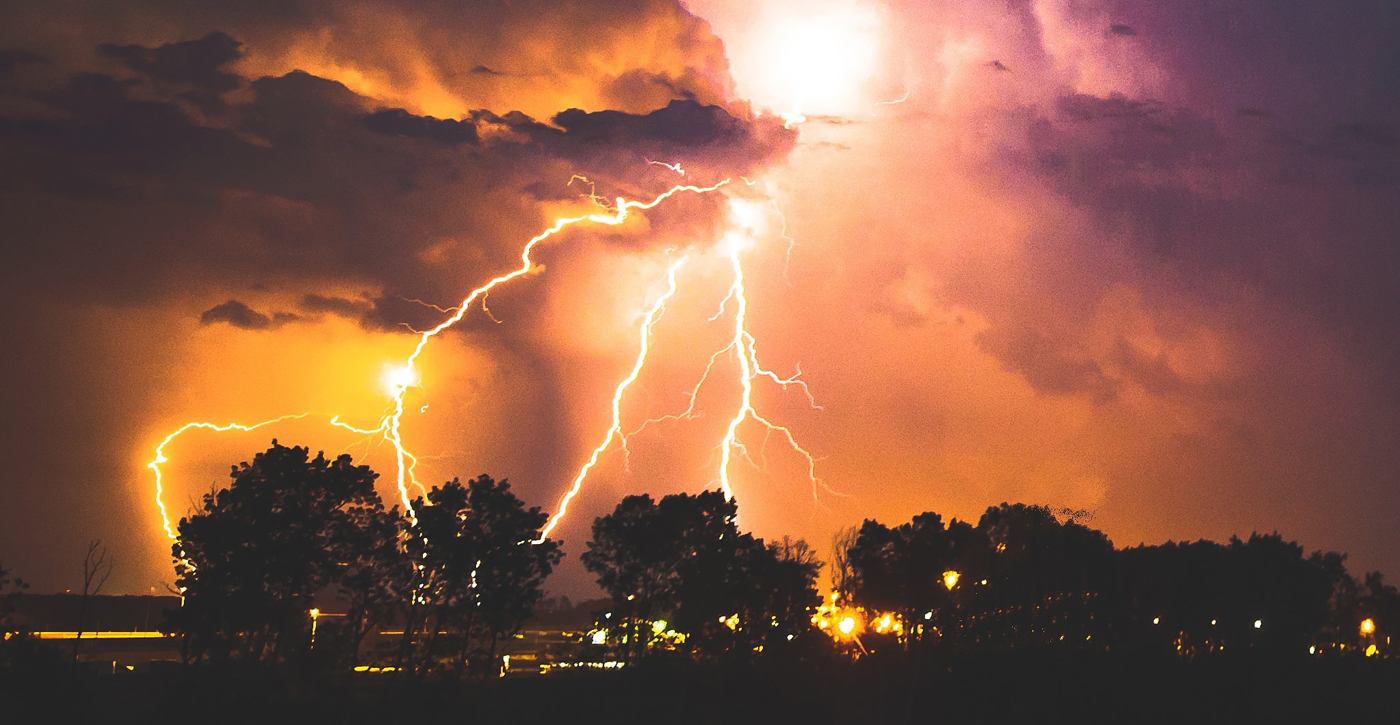
Peals of laughter kept erupting from the four groups spread around the room. There were energetic voices, periods of quiet, bursts of giggles, and clear good humor. It was a July morning in 2007, and we’d given the workshop participants the task of making lists of the unwritten rules of meeting for worship. Peter Crysdale and I were co-leading a Friends General Conference (FGC) Gathering workshop on deepening worship and inviting vital ministry. Our hope for the participants, who all came seeking to deepen the worship of their meetings, was that they would leave with tools that could help them nurture the worship with love and joy.
We had asked the four small groups to make lists, hoping that participants would have a sense of what rules were more common across meetings and what rules were unique to their own meeting. Then together we could talk about how the rules either supported or got in the way of the moving of the Spirit. The actual lists aren’t important, and our findings may be more valuable to you once you’ve thought about what unwritten rules you have around worship. What the lists allowed, however, was an exploration of the effect expectations and internalized sense of rules have on our experience of worship. Peter’s and my observation of the participants as they identified rules and their influence on expectations for—and thus experience of—worship affirmed the potential value of this approach.
 The Concern Arises
The Concern Arises
For some years now, I have walked with a concern for the spiritual health and vitality of the Religious Society of Friends. The concern has been seasoned through my monthly meeting (see “Engaging with a Monthly Meeting about Ministry,” FJ Sep. 2008), and I have been traveling among Friends with this concern since 2004. One of my early observations about the life of the Spirit among Friends was the importance of the quality of our corporate worship. To further reflect on what individuals can do to deepen worship, Peter and I co-led two workshops at New England Yearly Meeting (NEYM) and two at the FGC Gathering. All focused on how we can help to deepen worship and nurture vital ministry.
In considering the quality of our worship, we came back again and again to the expectations we bring, both the positives (what we expect will happen) and the negatives (what we expect will not happen). And those expectations are what I’ve come to call the unwritten rules. In walking with expectations or unwritten rules, I’ve come to three groupings: container, content, and core. Container rules address the context and environment of our worship, things like the room, the time, and entry and exit procedures. Content rules govern the form and content of the ministry during worship, things like type of messages, spacing, and delivery. Core rules are at the heart of Quakerism, those rules that bring us back to the Presence and encourage our faithful obedience.
 Sharing the Concern with Others
Sharing the Concern with Others
The next time I did the exercise on unwritten rules was in 2013, on a cold February night in the meetinghouse at the Woolman Hill Quaker Retreat Center in western Massachusetts. This time we worked together in one large group, as an introductory activity for a weekend workshop devoted to the topic. Kathleen Wooten and I were co-leading the workshop for a joint program sponsored by NEYM’s Ministry and Counsel Committee, Woolman Hill, and the Quaker Studies Program of NEYM’s Salem Quarter. Each participant wrote a rule or two on a three-by-five card and placed it in a basket. We passed the basket around, so each person could take a card, and then we took turns reading the rules. We could all identify rules about timing, messages, and not talking too long.
While the FGC workshop had used only that exercise, this time at Woolman Hill we could go further. The next day, gathered by the wood stove in the dining room of the conference center, we moved on to experiments about changing the rules. For these experiments we considered a number of ways to test whether we could find a centered worshipful space through a range of containers and contents. We experimented with three rules about the worship container: chairs in a circle facing outward, all standing, and chairs in rows of four like on a train. And we likewise experimented with three rules about the form of ministry: ten words or less, no words, and only in song. Later that year, when I repeated the workshop for Vassalboro Quarterly Meeting with Honor Woodrow, we added container options of kneeling in a circle and sitting in pairs. In both workshops we drew the new rules at random from slips of paper and then spent ten minutes in worship using that rule.
At Woolman Hill the first rule we tried was to set the chairs in rows of four with an aisle down the center: “train chairs” we called them. The rows of chairs faced the northern window looking out over a field. And then we sat in those chairs in worship for ten minutes. We could feel the worshipers beside us, and to some extent in front and behind. The strangeness of the linear orientation and the absence of someone looking back at us challenged the group. Messages questioned who or what we faced. But we also held that deeper Spirit in the strangeness.
Some months later, we were gathered in Big Bird Hall at Friends Camp in South China, Maine. In a spacious room with some 20 to 25 of us gathered in a circle on a very damp and cold day, we tried the container rule of kneeling in a circle. We offered pillows to those who wanted them, encouraged people to sit or stay in their chairs if they needed to, and the rest of us knelt. It challenged us all: What do we kneel before? How do we humble ourselves? What do we lose in a faith tradition that has no current tradition of kneeling? For each of the experimental rules, there was rich ministry informed by the new rule but also reaching beyond the rule.
 A Closer Examination of Two Common Rules
A Closer Examination of Two Common Rules
In these workshops we’ve played with rules and experimented with different rules; we’ve also taken the time to hold more deeply the usefulness and the limitations of some of the common rules. Two of the common content rules that were identified by all of the workshops and groups are “thou shalt leave space between messages” and “thou shalt not speak twice.” Both of these rules can be useful, and can also limit the Spirit.
Space Between Messages
The importance of space between messages has been stated as fact, or as a rule, numerous times. One New England Friend expressed to me that it was just plain courtesy to leave space between messages. I have listened to discussions where there was general agreement that a three-minute space between messages is essential. And yet I have also experienced times in worship when the moving of the Spirit was smooth and easy, and there was little space between messages.
Some years ago I was traveling to visit meetings in the Pacific Northwest. We had gathered on a Saturday evening with people in Multnomah Meeting in Portland, Oregon, who had support committees to worship with them and share experiences. Sitting in worship on Sunday morning, the Spirit felt rich and strong. My journal entry says: “Deep worship, powerful, grounded messages.” And yet toward the end of worship, there were multiple messages—one right after another—and I was moved to speak. I struggled with timing, not wanting to insert my voice into the fray. And yet my traveling companion, Eleanor Godway who is a seasoned elder, had been encouraging me to trust the timing of the Spirit. So I spoke. And despite the limited space between messages, the worship was deep and powerful.
Some years later on a visit to Wellesley (Mass.) Meeting, I was also traveling with Eleanor as my companion. The Dalai Lama had spoken in the area the day before, and people were carrying ministry from his visit. In that sun-filled room there were several messages toward the end of worship, and again I was moved to speak. After the rise of worship, someone from their Ministry and Counsel Committee took me aside and gently said that he’d been asked to let me know I’d spoken too soon after the previous message. I responded that I was trying hard to be faithful to the timing of the Spirit, and not to impose my sense of rightness on the timing of the message. At a later point I learned that the meeting had a dear elderly friend who was hard of hearing; as someone was transcribing messages during worship, space between messages was important for the transcribing friend to catch up. How do we hold the Spirit in those diverse needs?
A friend from NEYM shared a story of closing worship one year at an FGC Gathering. Hundreds of people were gathered in worship, and messages were coming thick and fast. Eventually someone stood to ask for silence. And into that silence a cell phone rang out. My friend imagined that it was God asking, “Did we get disconnected. I thought we had such a good connection!” When are rapid messages a sign of a good connection?
In 2010 more than 100 Friends from NEYM had an experiment in extended worship in Portland, Maine, at a hotel where chairs were arranged in a rectangle in a low-ceilinged meeting room. We entered into waiting worship on Friday evening, Saturday morning, Saturday evening, and again Sunday morning. Through that time there were many voices, and many experienced worship as chaotic. There was little silence. And yet I heard new voices: people who would never speak at our annual gathering in August had the courage to risk and to put themselves into the community. The chaos led the planning group to ask us on Saturday evening to center in worship and not to speak. I sat on the floor against a wall and grieved: it felt to me as if the rawness of the worship was scaring people, making us uncomfortable; rather than riding through it, we had shut down the chaos. When are we trying to make the worship look right, rather than waiting on the Spirit and seeing what emerges?
Only Speak Once
Another common rule in worship is to speak only once. In the context of worship sharing, this rule is often made explicit, and speaking more than once tends to be frowned upon in worship. And yet again, there are times in different meetings where I have experienced people speaking twice where it felt in the Spirit. Daphne Bye accompanied me on a visit to Dover (N.H.) Meeting on a late spring weekend, and while the vocal ministry was frequent, I had a clear sense of Spirit moving. One older friend, a well-respected elder, spoke early in worship, and then rose again toward the end.
In August 2013 in the Sunday morning worship of NEYM annual sessions, one of the pastors spoke twice. We were worshipping in a large, open round room, with folding chairs curved to the sides of the platform in the front. The children had left; the teens were no longer off to the side, and the adults were centering in worship following a keynote address that had included threads about language. The pastor spoke once and sat down, then rose to speak again following another message. The person carrying the microphone looked long and hard, but the pastor nodded and was given the microphone. In the message, the pastor expressed a sense of not having been fully faithful to the message the first time and a need to share all that had been given. While I was not able to connect the two messages, I was moved by a sense of vitality and faithfulness in the ministry.
 Core Rules
Core Rules
In his 1660 essay “The Authority which Christ excluded out of his Church,” Isaac Penington addresses the question of chaos in worship, and he hints at what he considers the core rules:
When the Spirit moves in any one to speak, the same Spirit moves in the other to be subject and give way: and so every one keeping to his own measure in the Spirit, here can be no disorder, but true subjection of every spirit; and where this is wanting, it cannot be supplied by any outward rule or order, set up in the church by common consent: for that is fleshly, and lets in the flesh, and destroys the true order, rule, and subjection.
When the Body is not listening to the Spirit, we need to pray for that listening. Creating outward rules distracts from the listening, curtailing the falling short and mistakes that can be an important part of the learning process. How do we approach worship in a spirit of openness to the Spirit moving beneath the words, ready to take on a gentle stream or Niagara Falls, as the Spirit moves? For me, this is the core: we come to worship seeking to listen to and be obedient to the Spirit. And to further nurture the capacity to hear, we practice that listening in our own lives on a daily basis.
 Teaching and Learning the Rules
Teaching and Learning the Rules
It is challenging to teach these unwritten rules to new people. In my own meeting in Hartford, Connecticut, I was sitting in worship, and noticed a young woman nearby that I’d not seen before. This particular day, unusually, I had slipped in a bit late and chosen to sit in the back of the room near the door. Settling into worship, the young woman spoke, sharing scripture and language about our heavenly Father being so generous and loving. About 10 to 15 minutes after giving this message, she spoke again in a similar vein. And then 10 to 15 minutes later, maybe 40 minutes into meeting, she stood and slipped out the back door. I rose and slipped out after her. She said she had to be someplace but was open to sitting for a few minutes. I told her that I hoped she’d be back, that I could feel the Spirit moving, and that she is on a spiritual journey. She mentioned how wonderful she found the open space. And I shared that I really hoped she would return, and that we generally only find that the Spirit moves us to speak once. I regretted saying anything about the speaking twice—there would have been time for that later. After worship, several people came up to me to thank me for following the young woman out, and they explicitly expressed their concern that she needed to be eldered for speaking twice. I haven’t seen this young woman return. Perhaps she will at some point, but we weren’t particularly welcoming, and my sharing of her “rule violation” may easily have driven her away.
These stories illustrate the challenge of learning Quaker worship. Is it something you intuitively get? My experience is that Quaker worship, and particularly waiting worship, is a skill we are building both individually and corporately. That skill is fundamentally about listening to and being obedient to the Spirit, which for me are the core rules. I try to practice listening and obedience on a daily basis, and I fall short all the time. I am often not quite on the right channel; it feels like my dial is just a little bit off. When we gather in worship with others, we’re also practicing that tuning. And sometimes the learning process may involve allowing ourselves and others to get it wrong. When we think others have gotten it wrong, it requires careful listening for whether it is our place to tell them they misheard, to invite them to hold the question of whether they misheard, or perhaps to hold them in love and have faith that the Spirit, the Inward Teacher, is also at work in their lives.
As I have walked with the three groupings of rules, I’ve found that we often substitute container and content rules when we have not spent time as a community with the core rules. Deep and rich worship can be nurtured by a discussion of the core rules of Quaker worship, and by each of our experiences and expectations as we sit together in the silence. Container and content rules may create something that looks very similar to what we expect when we’re living with the core rules. And if we don’t have the core, it can be tempting to substitute container and content rules to provide the form that we would get if we were listening deeply. Sometimes it works. But unless we’re clear that the core is where the worship has to come from, then we may misunderstand the usefulness and limitations of the container and content rules, and that the container and content rules can find a life of their own.






Thank you for this. I am brand new. A sincere seeker. And this is incredibly helpful.
[…] some Unwritten rules about Quaker worship that we “know” […]